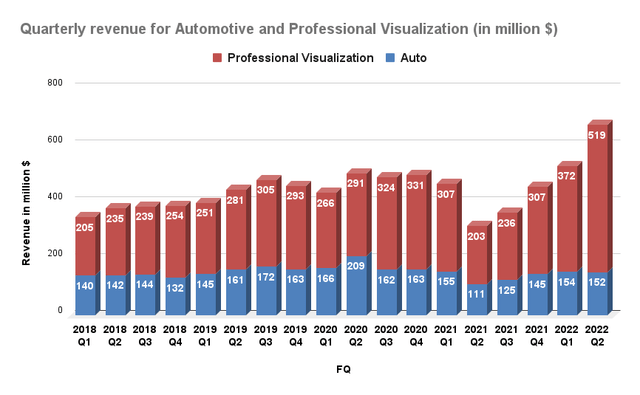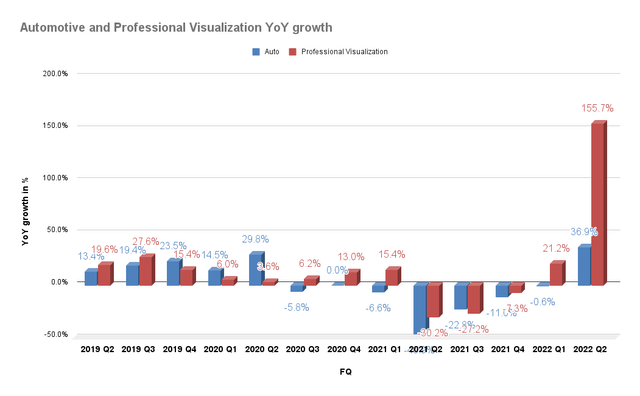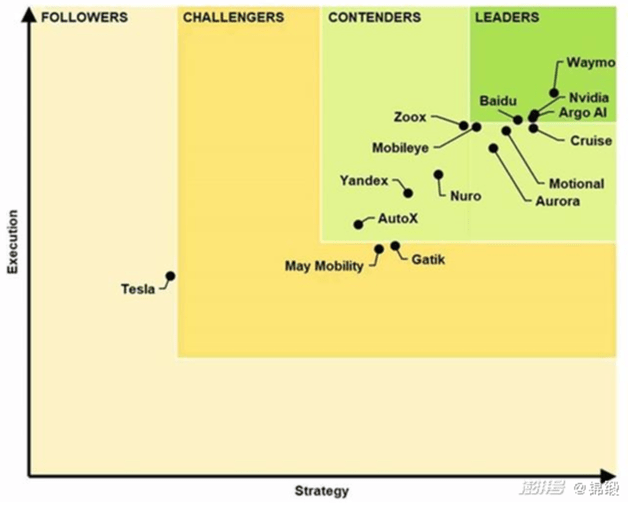Autonomous Driving and the Omniverse

Quarterly revenue for automotive and professional visualization segment. Data source: Company filings

Automotive and Professional Visualization segment YoY growth (quarterly). Data source: Company filings
Although both the automotive and the professional visualization segments are still emerging segments for the company, as they accounted for only about 2.3% and 8% of Q2'22 revenue, respectively, investors should note that their potential market opportunity is immense. This is clearly shown as both segments recently gained momentum, especially for the professional visualization segment. This is also where Nvidia sees tremendous opportunity on Nvidia Omniverse's " simulation and collaboration platform that provides the foundation of the metaverse."
This is an incredible extension of Nvidia's applications, and it seems to be gaining traction lately as well. We think what's highly important is that Nvidia's platform has real-world industrial, engineering, and design applications that extends beyond what the current movement in the metaverse is focused on, such as Roblox (NYSE: RBLX) for gaming and Facebook (NASDAQ: FB) from a social perspective. In Nvidia's case, the company aims to be an enabler for many companies who wish to leverage the benefits of the metaverse, as the company highlighted that " professionals at over 500 companies, including SHoP Architects, South Park, and Lockheed Martin (NYSE: LMT), are [already] evaluating the platform."

Insights Leaderboard for Automated Driving Systems. Source: Guidehouse Insights
Investors should be able to glean that Nvidia's AI leaderships also extends well into autonomous driving, where the company is recognized as one of the leaders together with Waymo (NASDAQ: GOOGL) (NASDAQ: GOOG), Argo AI (NYSE: F) ( OTCPK:VWAGY), and Baidu (NASDAQ: BIDU). Importantly, the company's Chinese autonomous driving partner, AutoX, recently launched its robotaxi system in Shenzhen, China, in January, which relies on NVIDIA DRIVE to power its autonomous driving system, a pivotal development that showcases the reliability and competency of NVDA's platform.
While this is unlikely to gain most investors' attention now as it's still a relatively insignificant component of its revenue, we wish to remind investors that its potential is immense, especially when NVDA has shown that its technology could also be adopted in the largest EV market in the world: China. Investors need to only turn to Chinese AI leader Baidu to understand why the company has staked its future in autonomous technology (as we explained in our recent article on Baidu, link to the article appended here), as Baidu has shown that it could also apply its AI technology to many different applications in manufacturing processes as well as industrial automation, among others.
Even though there's no shortage of top-notch competitors in this field, Nvidia could certainly count itself among the best, and we think it's a segment that deserves to be closely watched by investors as we think that it could be a huge catalyst for the company moving forward, together with its omniverse enabler.
Excerpt from recent SA article |







